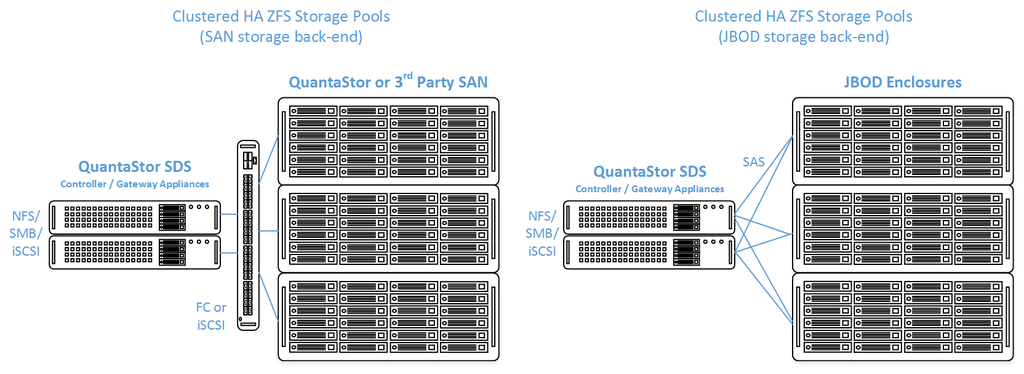Setup Guide for Clustered HA Storage Pools
Why Use a Clustered HA Storage Pool Configuration
QuantaStor's clustered storage pool configurations ensure high-availability (HA) in the event of a node outage or storage connectivity to the active node is lost. **Needs a little more flushout**
Requirements for a Clustered HA Storage Pool Configuration
Creating a QuantaStor Clustered HA Storage Pool will require:
- At least 2 QuantaStor appliances
- 2 network interfaces with separate networks for redundant cluster communication
- Shared storage available to all systems in the cluster
- SAS JBOD(s) or SAN-delivered block storage over Fiber-channel (preferred) or iSCSI
QuantaStor's High-Availability Storage Pool solution requires that the QuantaStor appliance cluster members all have access to the Storage Pool devices. Because of this requirement, the storage used for a HA Storage Pool must either be from a SAS JBOD enclosure capable of supporting multiple hosts, or for higher performance configurations, a SAN delivering block storage (LUNs) to the QuantaStor front-end appliances over FC (preferred) or iSCSI.
Configuration Steps
Configuration steps
Config Breakout Category 1
This is a sub config breakdown category 1. Think pre-setup.
Config Breakout Category 2
This is another sub config breakout. Think maybe installation.
Conf Breakout Category 3
Details on actual operation. From here use sub-headers for details when actually working with product.
Step Detail
This is a good step.
Step Detail
This is another step after that.
Step Detail
You liked that step. You'll love this step.
Wrapping Up
The best step of all.
Conf Breakout Category 4
Would you need anything after you finished? Maybe
Verifying Your Configuration
This is where we will want to provide steps (if any) to confirm that you did everything right.
Troubleshooting
Because nothing ever works right the first time.
